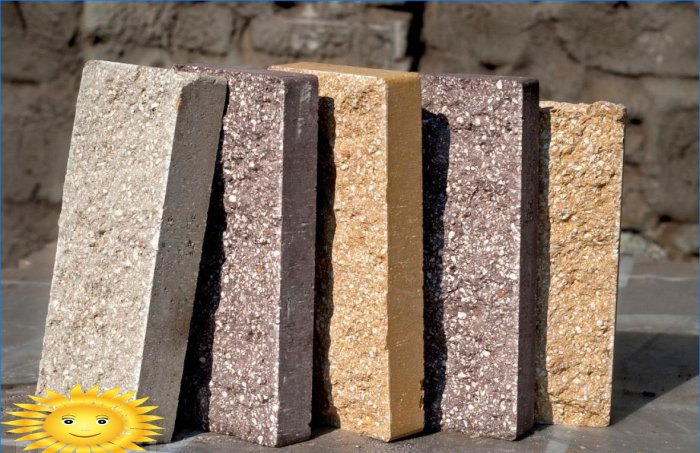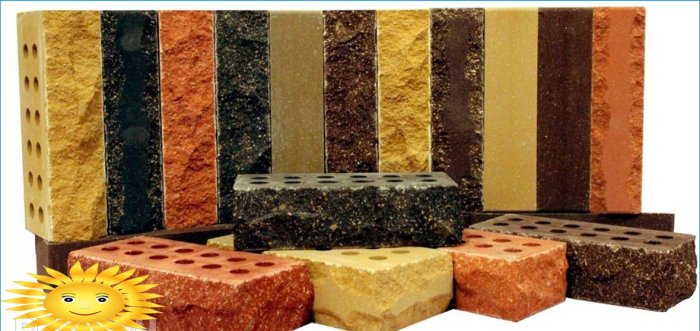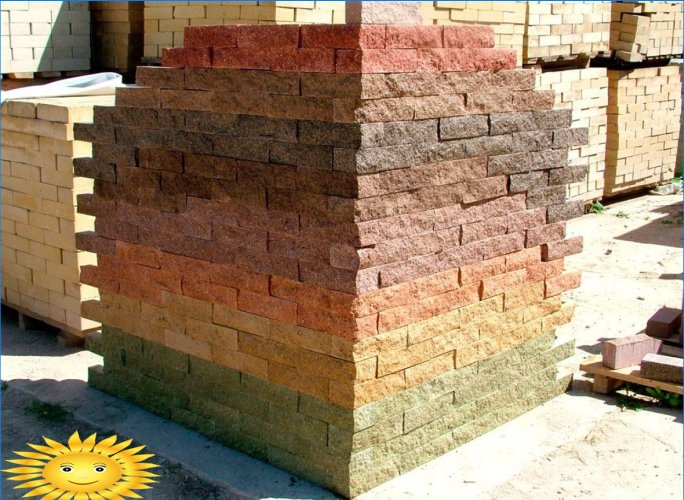


We briefly mentioned hyper-pressed brick when talking about wall cladding. Indeed, this is the most common use for this type of brick, which has enviable aesthetic properties. However, the scope of application of hyper-press bricks is much wider: wet and dry rooms, multi-storey buildings, fences, gazebos, outbuildings – anything you like are built from it..
For the first time they developed hyper-pressed brick in the USSR, in 1989. Now in Russia there are TU 5741-021-00284753-99 adopted in 1999: “Hyper-pressed Building Materials”, in the GOSSTANDART document it is registered under the number 03/021650.
By types, as can be seen in the photos presented by us, hyper-pressed bricks can be ordinary, front, hollow, full-bodied, figured. Standard size: 250x120x65 mm. There are narrow bricks – 250x60x65 mm, spoon bricks – 250x85x65 mm.

The raw material for the production of hyper-pressed bricks is usually a cement-lime mixture. However, some manufacturers can use screenings, blast furnace slag, and mining waste. For example, from the screening out of granite, a gray brick is obtained, from shell rock – a yellowish-mustard hue. Other colors are obtained with the help of dyes, the proportion of cement reaches 15%, it acts as an astringent. There is no sand in the composition of hyper-pressed bricks, and manufacturers can add modifiers at their discretion.
Despite the possible difference in composition, hyperpress is produced in the same way – by the so-called semi-dry pressing. During the production process, water is added at a minimum – 8–10%. The raw material is crushed to a fraction of 3-5 mm, mixed with cement, slightly moistened and sent to special matrices, where bricks are formed under a high pressure of 20-25 MPa. Then they are aged in a steam chamber, where the final hydration of the cement takes place..

Advantages of hyper-pressed bricks:
- High strength, which is 100-400 kg / cm2. The number of storeys of construction has no restrictions;
- Non-flammability;
- Frost resistance – withstand up to 300 cycles of thawing and freezing;
- Low water absorption rate – 6-8%;
- Perfect geometry, wide range of colors, variety of shapes and textures;
- Ease of installation, which does not differ from ordinary brick;
- Wide range of applications;
- Durability;
- Good adhesion to cement slurries, strong adhesion;
- You can build at any air temperature;
- Ecological cleanliness.
The disadvantages of hyper-pressed bricks are also, of course, available:
- Due to the high density, the thermal conductivity is increased, which ranges from 0.43 to 1.09 W * m * C. That is, the ability to maintain the temperature inside the building is somewhat reduced;
- One standard brick weighs more than 4 kg. The wall will turn out to be quite heavy, this must be taken into account when calculating the load on the foundation and its construction;
- A hyper-pressed brick is much more expensive than usual. The price can vary from 12 to 33 rubles per piece. For this reason, buildings from this material are rarely built, usually used only for facing facades;
- Before laying, the product must be dried, and the longer the better.

The advantages of hyper-pressed bricks, as professional builders are sure, are much more than disadvantages. The only thing that prevents its wider distribution and growth in popularity is the high cost of construction.

What are the key characteristics and features of hyper-pressed brick? Does it offer higher durability and strength compared to traditional bricks? How does hyper-pressed brick differ in terms of thermal insulation? Is it suitable for both interior and exterior applications? How does its cost compare with regular bricks?